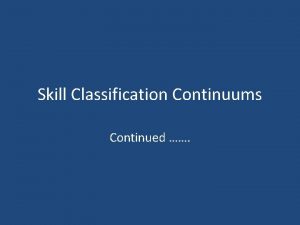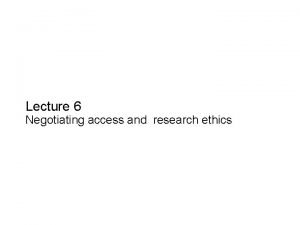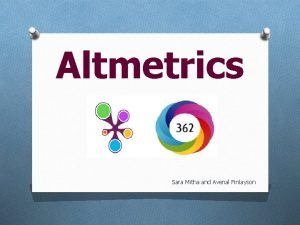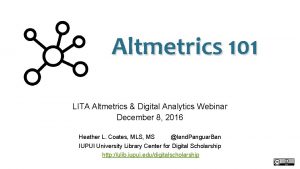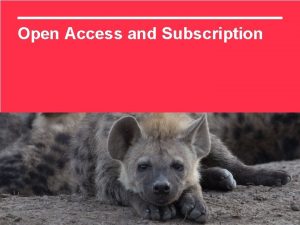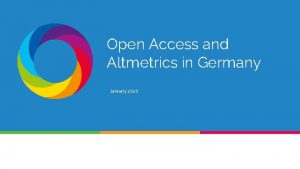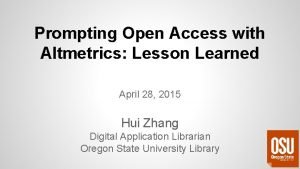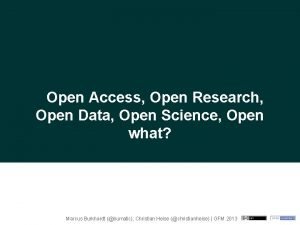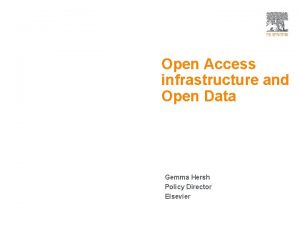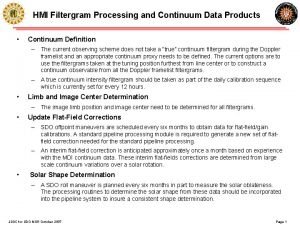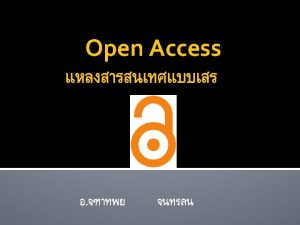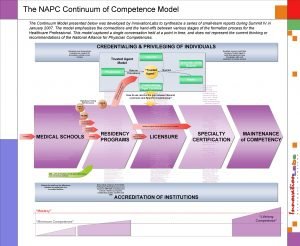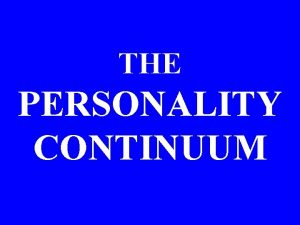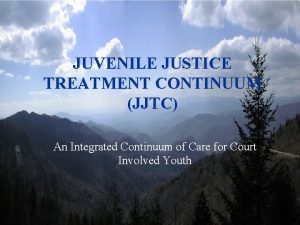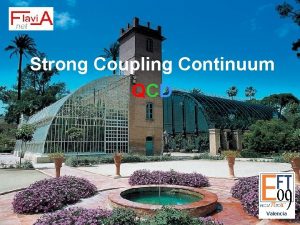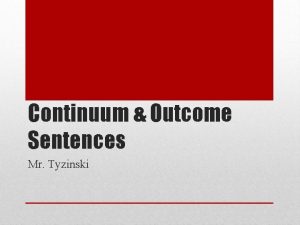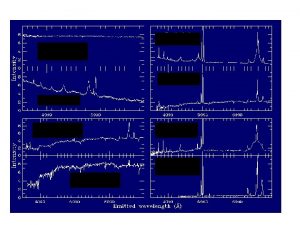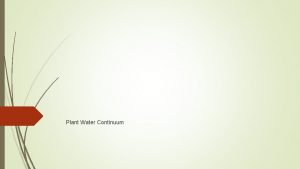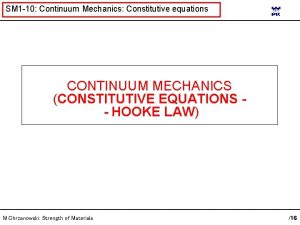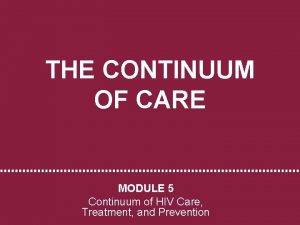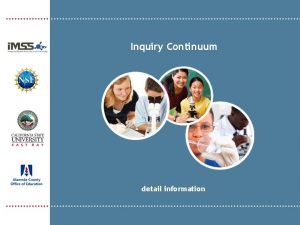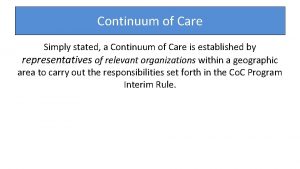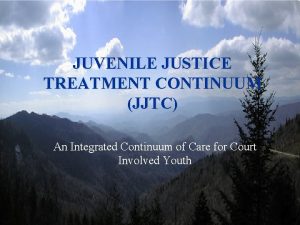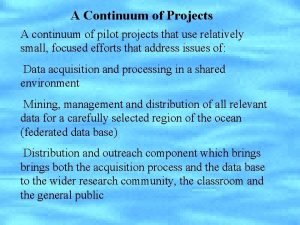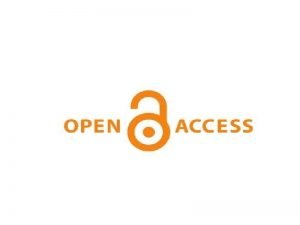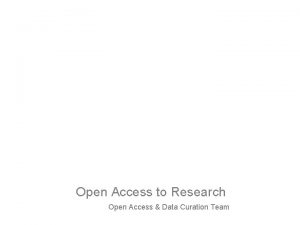The Open Access Continuum Open Research and Altmetrics

































- Slides: 33

The Open Access Continuum: Open Research and Altmetrics Michelle Willmers Scholarly Communication in Africa Programme CC-BY-SA


Open Access Green Route - Self-archiving of scholarly content prior to, in parallel with, or after publication - 2085 repositories worldwide (DOAR 2011) Gold Route - Primary publication in open-access journals - 7 070 journals (DOAJ 2011)

But it’s not only about journal articles. There is an abundance of information online. The internet has changed the way we consume information. No longer single source (journal, book). This changes how we locate, verify and measure new information. “Rather than finding information, it is the filtering of relevant information that is hard to do on the internet. ” (David Weinberg)

“Open access to this knowledge is critical if it is to be shared between individuals and groups. But sharing alone is not enough. Knowledge only becomes useful when we can distinguish between relevant and less relevant information, when we can discuss aspects of the information, when we can annotate and improve on ideas, when we can devise new approaches and collaborate online. ” (Olijhoek 2012)


Open Research • Replicable (transparency - method) • Reusable (results free for re-use and appropriation) • Replayable (tools available for appropriation) • Collaborative • Interdisciplinary • Granular • Immediacy factor • Suited to addressing socio-economic imperatives and collaborative breakthrough



Traditional Scholarship • • Relatively contained disciplinary context. Relatively clear scholarly community. Relatively clear boundaries. Particular points of engagement.

Traditional Scholarly Communication Literature reviews Bibliographies Conceptual frameworks Proposals Student Conceptualisa tion Notes Lectures Presentations Interview transcripts Translation Data Collection Engagement Data Analysis Reports Community Data sets Images Audio recordings Interviews Findings Books Conference papers Journal articles Technical papers Scholar Image CC-BY-SA Laura Czerniewicz

Scholarship 2. 0 • • • New ways of describing content (and looking for it). Metadata as passport to participation. New ways of tracking usage. Aggregation crucial. Blogging and social networking as mechanisms for research and collaboration. Outputs of social web become part of the scholarly record. Rise of the global networked scholar.

New Models of Scholarly Communication Literature Reviews Bibliographies Conceptual frameworks Proposals Conceptualisa tion Notes Lectures Presentations Interview transcripts Translation Data Collection Engagement Data Analysis Reports Data sets Images Audio recordings Interviews Findings Books Journal articles Image CC-BY-SA Laura Czerniewicz Conference papers Technical papers

New questions arise… • What about peer review and quality control? • What does this mean for how we measure and reward research? (What does this mean for the notion of ‘impact’? )

http: //altmetrics. org/manifesto/


Bibliometrics mined impact on the first scholarly Web. altmetrics mines impact on the next one. Jason Priem

Altmetrics 1. Conventional outputs > unconventional measures (Cameron Neylon) The decoupled journal






Altmetrics 2. Unconventional outputs > conventional measures (Cameron Neylon) The social web

The social web and science 58 k tweets mention scientific articles (with a DOI, PMID or arxiv ID), 1 – 31 July 2011. http: //buzzdata. com/stew/tweets-linking-to-scientific-papers-jul-2011#!/overview Highly tweeted articles 11 times more likely to be highly cited than lesstweeted articles. Tweets can predict highly cited articles within the first 3 days of article publication. Social media activity either increases citations or reflects the underlying qualities of the article that also predict citations Eysenbach et al. 2011

New tools for exploring impact www. total-impact. org





How do we start? SLOWLY. • • Experimenting with tools. Consider interoperability of systems (for tracking capacity). Gather usage data and watch for trends/characteristics. Engage with scholarly networks as important new commodity.

Conclusion: towards Expanded Open Access • • • Transparency in methodology, observation and collection of data. Public availability and re-usability of data. Public accessibility of scientific communication. Using web-based tools to facilitate scientific collaboration. Encouraging practices such as publishing open research, campaigning for open access, encouraging scientists to practice open notebook science, and generally making it easier to publish and communicate scientific knowledge.

References Czerniewicz C & Willmers M (2012) Open Education: Exploring Open in Higher Education. Presentation delivered at University of Cape Town Open Education Week 2012. Olijhoek T (2012) Scientific social networks are the future of science. http: //access. okfn. org/2012/03/20/scientific-social-networks-are-the-future-ofscience/ [Posted 20 March 2012] Priem J (2012) Toward a Second Revolution: altmetrics, total-impact, and the decoupled journal. Presented at Purdue University, 14 February 2012. https: //docs. google. com/present/view? id=ddfg 787 c_362 f 465 q 2 g 5 Weinberg D (2012) http: //www. toobigtoknow. com/
 Open closed continuum
Open closed continuum 영국 beis
영국 beis Terminal access controller access control system
Terminal access controller access control system Terminal access controller access-control system
Terminal access controller access-control system Negotiating access and research ethics
Negotiating access and research ethics Hát kết hợp bộ gõ cơ thể
Hát kết hợp bộ gõ cơ thể Bổ thể
Bổ thể Tỉ lệ cơ thể trẻ em
Tỉ lệ cơ thể trẻ em Voi kéo gỗ như thế nào
Voi kéo gỗ như thế nào Tư thế worm breton là gì
Tư thế worm breton là gì Chúa yêu trần thế alleluia
Chúa yêu trần thế alleluia Các môn thể thao bắt đầu bằng tiếng bóng
Các môn thể thao bắt đầu bằng tiếng bóng Thế nào là hệ số cao nhất
Thế nào là hệ số cao nhất Các châu lục và đại dương trên thế giới
Các châu lục và đại dương trên thế giới Công thức tính độ biến thiên đông lượng
Công thức tính độ biến thiên đông lượng Trời xanh đây là của chúng ta thể thơ
Trời xanh đây là của chúng ta thể thơ Cách giải mật thư tọa độ
Cách giải mật thư tọa độ 101012 bằng
101012 bằng độ dài liên kết
độ dài liên kết Các châu lục và đại dương trên thế giới
Các châu lục và đại dương trên thế giới Thơ thất ngôn tứ tuyệt đường luật
Thơ thất ngôn tứ tuyệt đường luật Quá trình desamine hóa có thể tạo ra
Quá trình desamine hóa có thể tạo ra Một số thể thơ truyền thống
Một số thể thơ truyền thống Cái miệng nó xinh thế chỉ nói điều hay thôi
Cái miệng nó xinh thế chỉ nói điều hay thôi Vẽ hình chiếu vuông góc của vật thể sau
Vẽ hình chiếu vuông góc của vật thể sau Nguyên nhân của sự mỏi cơ sinh 8
Nguyên nhân của sự mỏi cơ sinh 8 đặc điểm cơ thể của người tối cổ
đặc điểm cơ thể của người tối cổ Thế nào là giọng cùng tên?
Thế nào là giọng cùng tên? Vẽ hình chiếu đứng bằng cạnh của vật thể
Vẽ hình chiếu đứng bằng cạnh của vật thể Vẽ hình chiếu vuông góc của vật thể sau
Vẽ hình chiếu vuông góc của vật thể sau Thẻ vin
Thẻ vin đại từ thay thế
đại từ thay thế điện thế nghỉ
điện thế nghỉ
